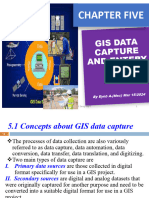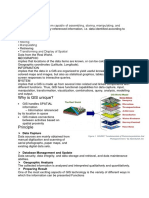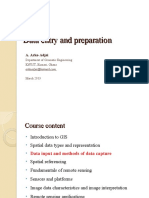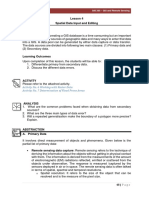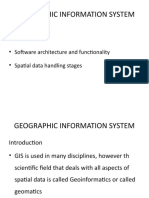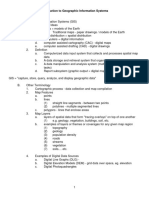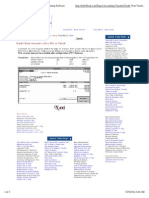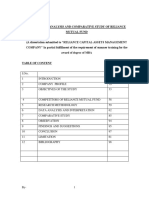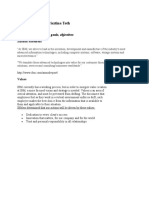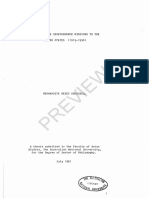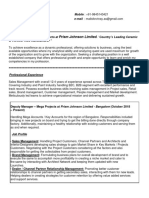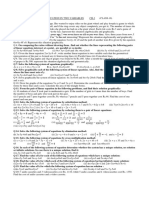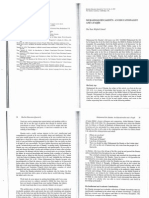0% found this document useful (0 votes)
8 views35 pagesUnit 4 Data Acquisition Data Quality and Management
The document discusses various methods of data acquisition and management in Geographic Information Systems (GIS), including primary and secondary data capture techniques. It covers geo-referencing and digitization processes necessary for integrating geographic data, as well as an introduction to Global Navigation and Satellite Systems (GNSS) and their applications. Key technologies such as GPS, photogrammetry, and remote sensing are highlighted for their roles in enhancing spatial data quality and accuracy.
Uploaded by
masterprofx001Copyright
© © All Rights Reserved
We take content rights seriously. If you suspect this is your content, claim it here.
Available Formats
Download as PDF, TXT or read online on Scribd
0% found this document useful (0 votes)
8 views35 pagesUnit 4 Data Acquisition Data Quality and Management
The document discusses various methods of data acquisition and management in Geographic Information Systems (GIS), including primary and secondary data capture techniques. It covers geo-referencing and digitization processes necessary for integrating geographic data, as well as an introduction to Global Navigation and Satellite Systems (GNSS) and their applications. Key technologies such as GPS, photogrammetry, and remote sensing are highlighted for their roles in enhancing spatial data quality and accuracy.
Uploaded by
masterprofx001Copyright
© © All Rights Reserved
We take content rights seriously. If you suspect this is your content, claim it here.
Available Formats
Download as PDF, TXT or read online on Scribd
/ 35








